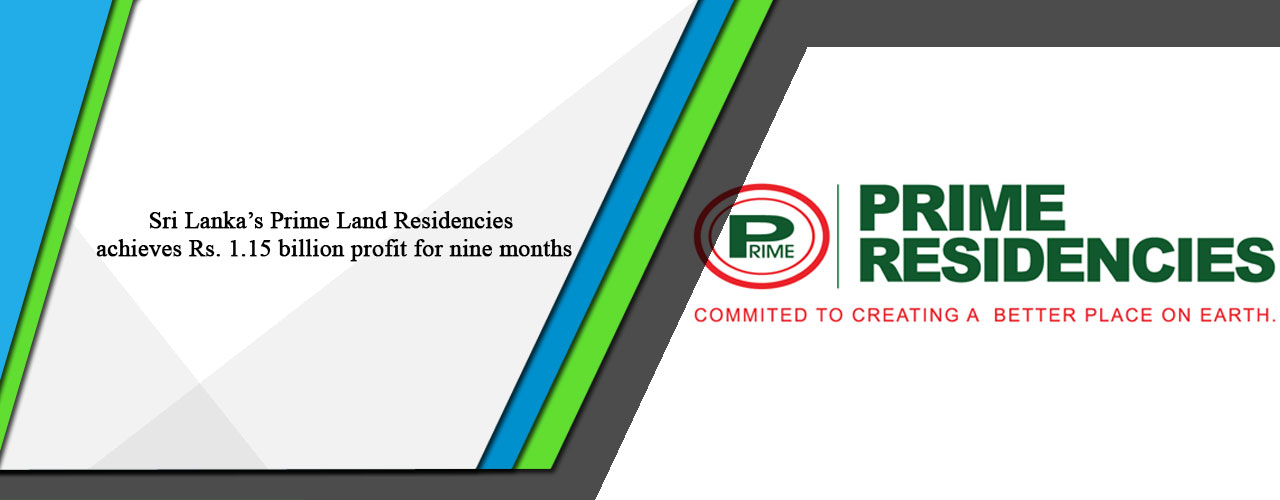Based on the context provided, here is the current financial performance and future outlook for Prime Lands Residencies PLC (PLR):
Current Financial Performance:
- P/E Ratio: The price-to-earnings ratio is 8.45, which can be indicative of how the market values the company’s earnings. A P/E ratio of 8.45 means the market pays රු.8.45 for every රු.1 of earnings.
- EPS: The earnings per share (EPS) is රු.0.98. This figure is a measure of the company’s profitability on a per-share basis.
- Yield: The dividend yield is 12.05%, which is quite high and suggests that the company pays back a significant portion of its share price as dividends to shareholders.
- Dividend: The company has declared a dividend of රු.1.00 per share.
- Ex-Dividend Date: The ex-dividend date was on June 6, 2023. This is the cutoff date to be eligible for the next dividend payment.
- Stock Performance:
- 5 Day: 0.00%
- 1 Month: 9.21%
- 3 Month: 27.69%
- Year-to-Date (YTD): 27.69%
- 1 Year: 3.75%
- Volume: The average volume is 410.66K, but on a recent trading day, the volume was 758.18K, which is 185% of the average, indicating higher trading activity.
Above analysis and information is compiled by LankaBIZ (GPT) – Sri Lanka’s First ever AI Assistant for Stock Market and Research. Click below link to ask questions about any listed company in Sri Lanka.
www.lankabizz.net
The future outlook of the construction industry in Sri Lanka, as inferred from the provided context, includes several key points:
- Optimism for Growth: Many local players in the construction industry are optimistic about the future of this segment in Sri Lanka. The state has been investing in infrastructure development since 2009, and there is still a significant need for further development, particularly in road construction.
- Demand for Housing and Facilities: With increasing per capita income and a growing population, there is a high demand for affordable housing in Sri Lanka. This demand extends to new facilities, including homes, office spaces, and hotels, indicating that the construction industry is expected to continue growing.
- Government Investment: The government’s investment in developing infrastructure is a positive sign for the construction industry, suggesting ongoing support and potential for future projects.
- Challenges to Address:
- Brain Drain: The industry is experiencing a loss of skilled professionals, which could impact its growth and development.
- Industry Decline: There has been a continuous decline in the growth of the industry, which needs to be addressed.
- Project Rescheduling: Projects across the industry have been rescheduled, which may affect timelines and profitability.
- High Costs and Wastage: The industry is facing high construction costs and significant wastage, which could impact margins and sustainability.
- Youth Attraction: Attracting young people to the construction industry is a challenge, which could lead to a workforce shortage in the future.
- Continuous Investment Needed: For the construction industry to thrive or return to the levels of business seen in previous years, continuous investment is necessary. Otherwise, there could be broader economic implications.
- Job Security Concerns: The industry has seen job terminations and a reluctance among workers to remain in the sector due to instability, which is exacerbated by the COVID-19 situation and other factors.
In summary, while there is optimism and demand that suggest growth potential for the construction industry in Sri Lanka, several challenges need to be addressed to realize this potential fully. These include addressing the brain drain, managing high costs, attracting youth to the industry, and ensuring continuous investment and job security.

